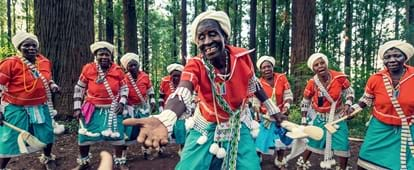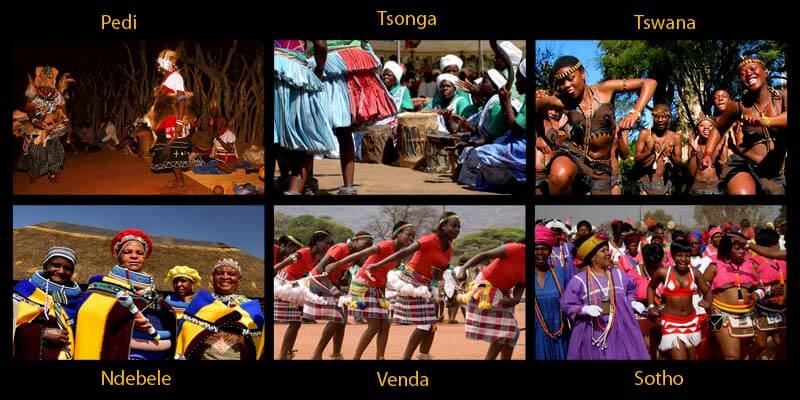Our South African Culture Today Statements
Table of ContentsThe Single Strategy To Use For South African Culture TodayUnknown Facts About South African Culture TodaySouth African Culture Today for DummiesThe Facts About South African Culture Today UncoveredHow South African Culture Today can Save You Time, Stress, and Money.The smart Trick of South African Culture Today That Nobody is Talking About
A matter of relevance in Zambian towns is the passing away of enjoyed ones. All participants of the village put cash, time and initiative with each other for the interment of the deceased.During the mourning duration; males remain outside the home and the ladies stay inside your home of the deceased. After speaking about the deceased, the town strolls to the place of interment to say their last bye-byes. Songs and dance is a really essential facet of the Zambian society. The different tribal units have their own dancing forms; however, makishi is usual among all people.
3 Easy Facts About South African Culture Today Described
When it comes to music, drums are utilized one of the most, with a selection of drumming ceremonies. In Zambia, majority of the people are Christian; Protestant and Roman Catholic. There are little groups of Muslims and Hindus, with the rest adhering to neighborhood indigenous tribal ideas.

South African heritage and culture is exceptionally diverse, and consists of several various groups of individuals that each have their own practices and ideas. Having such a variety of people and cultures is what makes South Africa so unique. In the true sense of the expression, we are a rainbow nation.
South Africa has roughly three hundred thousand Portuguese individuals residing in it. Making it the 7th on the list of nations with the most Portuguese individuals in it beyond Portugal. Portuguese is not just a culture, however it is additionally a language and a citizenship. Portuguese people originate from the country of Portugal in Europe, nonetheless, as a result of Portugal (like lots of other nations in Europe) discovering the globe and dominating various other countries during the 15th 20th centuries, South Africa has what we call Portuguese South African's living in it.
How South African Culture Today can Save You Time, Stress, and Money.
Amongst the popular features of the topography is a plateau that covers virtually two thirds of the center of the country. The plateau facility rises toward the southeast, where it climaxes in the Drakensberg array, component of a cliff that separates the plateau from the coastal areas. The Drakensburg includes Sparkling wine Castle, the highest possible optimal in the nation.
The area north of the Witwatersrand, called the bushveld, inclines downward from eastern to west towards the Limpopo River, which creates the global boundary. The western area of the plateau, the middleveld, likewise comes down towards the west and varies in elevation in between the highveld and bushveld. Between the Drakensburg and the eastern and southern shoreline, the land descends to the sea.
Nearer the coast there is a low-lying plain called the eastern lowveld. Southwest of the plateau the country ends up being gradually extra dry, paving the way to the stony desert of the Great Karroo, approached the eastern by the lower, much better sprinkled plateau of the Little Karroo. Dividing the completely dry southerly inside from the sandy littoral of the southerly coastline and West Cape is one more range, the Langeberg.
The 10-Second Trick For South African Culture Today
The nation's racially, ethnically, and politically split history has actually created nationwide and subnational icons that still function as symbols of the nation, and others More about the author symbols that are accepted only by certain teams. The monuments to white settler occupation and political supremacy, such as the Afrikaner Voortrekker ("leader") Monument in Pretoria and the Rhodes Monolith recognizing the British colonial realm builder and Cape prime preacher Cecil Rhodes, stay sectarian signs.
The very first modern-day residents were the San ("bushman") hunter-gatherers and the Khoi ("Hottentot") peoples, that rounded up animals (South African culture today). The San might have been present for hundreds of years and left evidence of their presence in hundreds of old cavern paints ("rock art"). Bantu-speaking clans that were the forefathers of the Nguni (today's amaZulu, amaXhosa, amaSwazi, and vaTsonga peoples) and Tswana-Sotho you can find out more language groups (today's Batswana and Southern and Northern Basotho) migrated down from east Africa as early as the fifteenth century

The 2 former republics of the Orange Free State and Transvaal (South African Republic) were developed by Afrikaner settlers that defeated and dispossessed the Basotho and Batswana. Lesotho would certainly have been forcibly integrated right into the Orange Free State without the expansion of British protection in 1869. The best marriage of the country resulted from the South African Battle (18991902) between the British and both Afrikaner republics, which minimized the nation to wreck at the beginning of the twentieth century.
Afrikaners historically considered themselves the only real South Africans and, while approving complete citizenship to all locals of European descent, rejected that standing to people of color up until the autonomous change of 1994. British South Africans maintain a feeling of social and social link to Great Britain without compromising their identification as South Africans.
What Does South African Culture Today Do?
The variety and fragmentation within ethnic collections and the equilibrium of stress between those groups during the twentieth century protected against interethnic civil dispute. While intergroup stress over resources, privileges, and political supremacy remain, those conflicts are as likely go to match Zulu against Zulu as Zulu versus Xhosa or African versus Afrikaner.
From colonial India, British sellers and managers brought the bent steel ornamental roofing systems and slender shoelace job columns that still represent the terraces of homes in the areas and cities throughout the country. Holy places add an essential architectural aspect even in the tiniest towns. Along with the soaring steeples and timeless stonework of Afrikaans Dutch Reformed churches, Anglican churches, synagogues, mosques, and Hindu shrines give variety to the spiritual architectural scene.

Butchering and the brewing of typical cereal beer are important in protecting the engagement and goodwill of the ancestors that are considered the guardians of good luck, prosperity, and wellness. Indian areas preserve their indigenous culinary customs and apply them on Islamic and Hindu ritual and ceremonial celebrations. Afrikaners and Coloured people gather at weekends and unique celebrations at multifamily barbecues called braais, where area bonds are strengthened.
Because this was the key financial venture of both black Africans and white colonists, problem between those teams fixated the ownership of grazing land and animals. In 1867, the largest diamond deposits worldwide were discovered at Kimberley in the west central area. The wealth from those fields helped fund the exploitation of the best gold reef worldwide, which was found on the Witwatersrand in 1886.
Some Ideas on South African Culture Today You Need To Know
This brought about misunderstandings and purposeful misstatement in the negotiations of white inhabitants and government authorities with African principals during the early american period (South African culture today). In the facility of African gets, some elements of common and primarily "tribal trust fund" land period were maintained, and even in white backwoods, forms of communal tenure were still exercised in locations with African areas
After the autonomous makeover of 1994, programs for land restitution, redistribution, and reform were instituted, but progression has been sluggish. The white minority still manages eighty percent of the land. In the wake of agricultural land intrusions in Zimbabwe, the Department of Land Matters has promised to speed land redistribution.